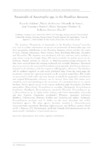Por favor, use este identificador para citar o enlazar este ítem:
http://www.alice.cnptia.embrapa.br/alice/handle/doc/1063776Registro completo de metadatos
| Campo DC | Valor | Lengua/Idioma |
|---|---|---|
| dc.contributor.author | ADAIME, R. | pt_BR |
| dc.contributor.author | SOUSA, M. do S. M. de | pt_BR |
| dc.contributor.author | PEREIRA, J. F. | pt_BR |
| dc.contributor.author | OLIVEIRA, A. M. | pt_BR |
| dc.contributor.author | ZUCCHI, R. A. | pt_BR |
| dc.date.accessioned | 2017-02-13T11:11:11Z | pt_BR |
| dc.date.available | 2017-02-13T11:11:11Z | pt_BR |
| dc.date.created | 2017-02-13 | pt_BR |
| dc.date.issued | 2016 | pt_BR |
| dc.identifier.citation | In: MEETING OF THE TEPHRITID WORKERS OF THE WESTERN HEMISPHERE, 9th., 2016. Buenos Aires. Book of Abstracts... [Buenos Aires: FAO: AIEA, 2016]. p. 162. | pt_BR |
| dc.identifier.uri | http://www.alice.cnptia.embrapa.br/alice/handle/doc/1063776 | pt_BR |
| dc.description | The database "Parasitoids of Anastrepha in the Brazilian Amazon" provides easy and accessible information on species of parasitoids of Anastrepha spp. and their geographic distribution in the Brazilian Amazon, which includes the states of Acre, Amapá, Amazonas, Mato Grosso, Pará, Rondônia, Roraima, Tocantins and Maranhão. The database was developed with free software tools, includes a map viewer using the Google Maps API and is available for public access on the Embrapa Amapá website or directly at http://parasitoid.cpafap.embrapa.br. Its data were sourced from the existing technical and scientific literature. Parasitoid species occurrence, the associated host plants and geographic distribution data were included in the database, with the respective bibliographic references. The database will be updated regularly to add newly published data. From the main page, the occurrence reports for a given parasitoid can be searched using filters. The results are presented in both table and map format, in which the geographic distribution and original bibliographic reference can be viewed. More than 400 entries were compiled, each corresponding to the occurrence of a parasitoid species in a given location. Twelve species occur in the region, including eight Braconidae [Asobara anastrephae (Muesebeck), Doryctobracon areolatus (Szépligeti), Doryctobracon brasiliensis (Szépligeti), Doryctobracon crawfordi (Viereck), Doryctobracon sp. 1, Doryctobracon sp. 2, Opius bellus Gahan, and Utetes anastrephae (Viereck)] and four Figitidae [Aganaspis nordlanderi Wharton, Aganaspis pelleranoi (Brèthes), Odontosema albinerve Kieffer, and Tropideucoila rufipes Ashmead]. Doryctobracon areolatus and O. bellus are the most abundant and widely distributed species. The plant species Spondias mombin L. (Anacardiaceae), Geissospermum argenteum Woodson (Apocynaceae) and Bellucia egensis (Mart. ex DC.) Penneys, F.A. Michelangeli, Judd and Almeda (Melastomataceae) are the most notable "multipliers" of parasitoid species. | pt_BR |
| dc.language.iso | eng | eng |
| dc.rights | openAccess | eng |
| dc.subject | Geographic distribution | pt_BR |
| dc.subject | Parasite | pt_BR |
| dc.subject | Plant pest | pt_BR |
| dc.title | Parasitoids of Anastrepha spp. in the Brazilian Amazon. | pt_BR |
| dc.type | Resumo em anais e proceedings | pt_BR |
| dc.date.updated | 2017-02-13T11:11:11Z | pt_BR |
| dc.subject.thesagro | Praga de planta | pt_BR |
| dc.subject.thesagro | Parasito | pt_BR |
| dc.subject.thesagro | Distribuição Geográfica | pt_BR |
| riaa.ainfo.id | 1063776 | pt_BR |
| riaa.ainfo.lastupdate | 2017-02-13 | pt_BR |
| dc.contributor.institution | RICARDO ADAIME DA SILVA, CPAF-AP; MARIA DO SOCORRO MIRANDA DE SOUSA, UNIFAP; JOSE FRANCISCO PEREIRA, CPAF-AP; ALZIRA MARQUES OLIVEIRA, UNIFAP; ROBERTO ANTONIO ZUCCHI, ESALQ/USP. | pt_BR |
| Aparece en las colecciones: | Resumo em anais de congresso (CPAF-AP)  | |
Ficheros en este ítem:
| Fichero | Descripción | Tamaño | Formato | |
|---|---|---|---|---|
| CPAFAP2016ParasitoidsofAnastrephaspp.pdf | 47.55 kB | Adobe PDF |  Visualizar/Abrir |









